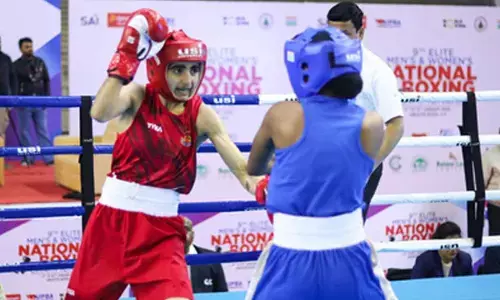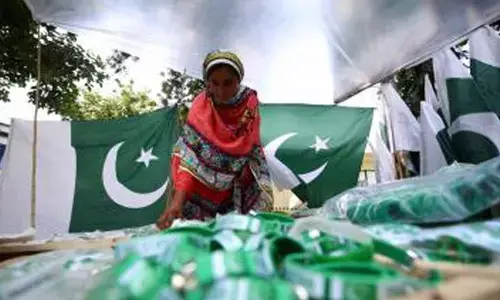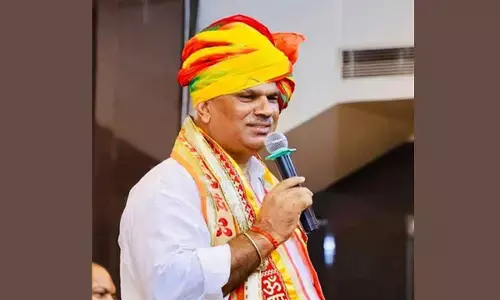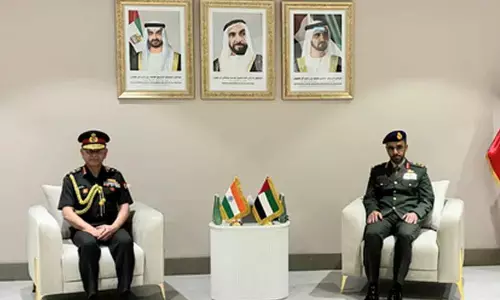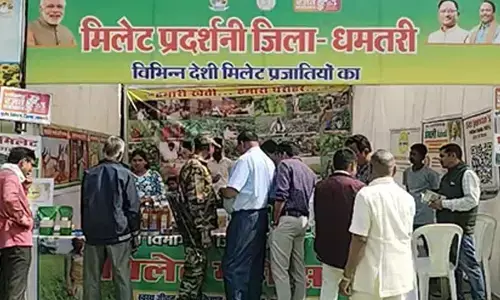The enduring magic of cinema in India
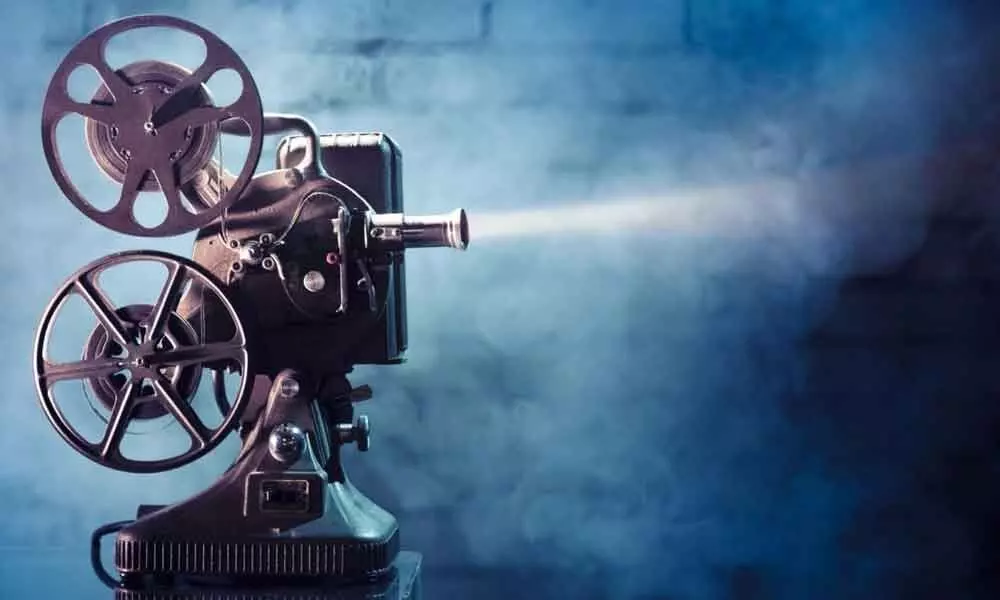
The enduring magic of cinema in India
From village to town, to city to metropolis, people seek distraction and relief, from the humdrum routine and stress of day to day life, in various forms of entertainment.
From village to town, to city to metropolis, people seek distraction and relief, from the humdrum routine and stress of day to day life, in various forms of entertainment.
Games and sports, hobbies such as listening to music or painting, exercising, going away to a scenic spot far away from the congestion and pollution of cities, or watching a play or a movie, are some popular avenues of relaxation and diversion. There is also the occasional circus or, for those who can afford it, an opera, especially in the western countries.
Annual industrial exhibitions held in earmarked grounds in large cities such as the ones in Pragati Maidan in New Delhi or the Exhibition Grounds in Hyderabad city also house amusement parks meant largely for the entertainment of children.
Highlight:
The Indian film industry produces the world's largest number of feature films, followed by Nigeria, Hollywood and China. They have a following throughout South Asia and across Europe, North America, Asia and the Middle East, Africa, China and elsewhere reaching over 90 countries. The most popular genre of Indian films is the 'masala' film. Other genres are comedy, romance, drama, mythological, spy thrillers and melodrama along with musical numbers. Children's films constitute a separate category altogether
I had a bit of a brush with the movie arena as a child. Later on I also served a fairly long stint as the President of the Hyderabad Cricket Association. I can, therefore, state without much fear of contradiction, that cricket and the cinema are easily the most common forms of entertainment in the country.
The history of the motion film in the world began with the public screening of Lumiere brothers' short films, in Paris in 1895.Spice was added to movies by the popularisation of special effects, in the 1890s, by Georges Melies.
Raghupathi Venkaiah produced the first short film in Telugu in 1909. While H.S. Bhatavdekar produced India's first documentary film, 'the Wrestlers', in 1899, the first film to be released in India was Marathi silent film by C. Pundalik in 1912.In the ensuing year, the legendary Dadasaheb Phalke made India's first full-length film 'Raja Harishchandra', another silent film in Marathi.
Synchronised sound recording was mainstreamed towards the end of the 1920s, and 'Alam Ara' was the first 'talkie' film released in 1931. Around the same time the first ever short films were made and released in Telugu and Tamil also. As a child actor I remember having had to speak straight into the microphones placed the little above our heads. Naturally the recording sometimes carried disturbances caused by noise in the environment.
Now, of course, re-recording facilities are available and the audio part is added on separately to the video portion. The all-time Telugu blockbuster movie 'Pathala Bhairavi' was not only a runaway success at the box office, but was also the first South Indian movie to be screened - at the first India international film Festival.
Subsequently, came the 3-D movies. Before entering the theatre, one was given special dark glasses which would spectacularly enrich those scenes which were meant to be seen in three dimensions.
The Indian film industry produces the world's largest number of feature films, followed by Nigeria, Hollywood and China. They have a following throughout South Asia and across Europe, North America, Asia and the Middle East, Africa, China and elsewhere reaching over 90 countries.
The most popular genre of Indian films is the 'masala' film. Other genres are comedy, romance, drama, mythological, spy thrillers and melodrama along with musical numbers. Children's films constitute a separate category altogether.
Short films have also become popular in recent years and are an effective medium for conveying powerful messages about important themes in short space of time. Much value is added to a film through scenes shot on location. Very often directors choose scenic places in different parts of the country as well as abroad. Then there is the George 'off beat' movies with unusual themes and are devoid of the usual 'masala'. Lacking in popular appeal, as they do, they are favourite candidates for awards but do not often fare very well at the box office.
It is also a common practice for trailers of upcoming movies to be shown, usually after the intermission. A well-produced piece can be an effective tool for promoting interest in the to – be – released film.Of particular interest among the films I acted in was the one called 'Balanandam', a film exclusively meant for children in which all the actors were also children.
Many awards have been instituted internationally and in India, for recognising individual portrayals as well as quality and popularity of the movies, apart from excellence in different areas such as story writing, scoring music and photography among others.
The Nandi awards in Andhra Pradesh, the Dadasaheb Phalke award and the annual Film Fare awards in Bollywood and the Academy Awards (also known as the Oscar awards), at the international level are among the most prestigious.
The British Academy Film Awards also annually honour the best national and foreign films. Film festivals are organised around the world to enable extended presentation of films, Venice, Cannes and Berlin being the most popular and known as 'the big three'.
In the early days of the cinema industry movies were called 'Bioscopes'. I am old enough to remember that, when I had just joined service, not all theatres everywhere were permanent cement concrete buildings. There were what are known as 'touring talkies', comprising large tents pitched temporarily for showing the cinema, having done which they would pack up and leave for another place together with the reel.
I distinctly recall how Usha and I watched a movie in a small taluk headquarters called Addanki when I was Sub-Collector at Ongole. Amusingly enough, the movie had started when someone discovered that the village headman had not arrived. So it was stopped, and started again, only after his arrival! Little did they know that my wife and I were present!
Not all theatres are housed in properly or adequately appointed buildings. Many have uncomfortable chairs. I remember my brother describing the chairs in a very posh 70 MM theatre in Delhi (Sheila) as 'thoroughly uncomfortable!'
Now multiplex theatres have become a common facility in many cities, those that are particularly large being called megaplexes. I remember that, when we first came to Hyderabad in 1955, the twin cities had the largest number of cinema halls in the country.
The impact of the cinema medium, desirable or otherwise, especially on the youth, has been the subject matter of a raging debate for a long time now. It cannot be gainsaid, on the one hand, that depiction of an overdose of sex or violence does a deleterious effect on the minds of teenagers.
On the other hand, there have been many films portraying the values of important qualities such as patriotism, religious faith or respect for elders etc. So long as a film provides healthy enjoyment and, in the process, conveys a message of positive value, it should be regarded as a welcome addition to the means of entertainment and relaxation available to a public thirsty for wholesome entertainment.
The Censor Board is always there to ensure that the content stays within acceptable limits of decency and decorum. In any case it needs to be remembered that the revenue derived from the production, and the exhibition, of films is not to be scoffed at, at least so far as the perennially fund- strapped local bodies are concerned.
The advent of movies has no doubt resulted in the occupation by them, of space in which traditional forms of entertainment flourished, such as the theatre, musical performances and street entertainment media (which vary from state to state).But in states where the alternative forms are strong and robust, (West Bengal, Maharashtra and Tamil Nadu being among notable them) they have not only survived but continue to be substantial draws.
Many people, especially in the southern states used to have this obsessive syndrome of what was known as the 'first show first ticket'. It is not unknown for people to reach the theatre the night before and sleep on the floor in order to be the first at the ticket – counter next morning!
(The writer is former Chief Secretary, Government of Andhra Pradesh)
(The opinions expressed in this column are that of the writer. The facts and opinions expressed here do not reflect the views of The Hans India)








